A coil pack is essential for your car’s ignition, turning the low voltage from the car’s battery into the high voltage needed for engine combustion. Is your engine misfiring or hard to start? These are common signs of a failing coil pack. This article covers what a coil pack does, how to spot issues, and steps for diagnosing and replacing it.
Key Takeaways
- Coil packs are essential for converting battery voltage to the spark needed for engine ignition, playing a crucial role in modern ignition systems.
- Common symptoms of a failing coil pack include engine misfires, poor fuel economy, difficulty starting, and unusual exhaust noises, indicating the need for prompt inspection.
- Regular visual inspections, resistance measurements, and spark output tests can help diagnose coil pack issues early, preventing severe engine damage and costly repairs.
Understanding Ignition Coil Packs
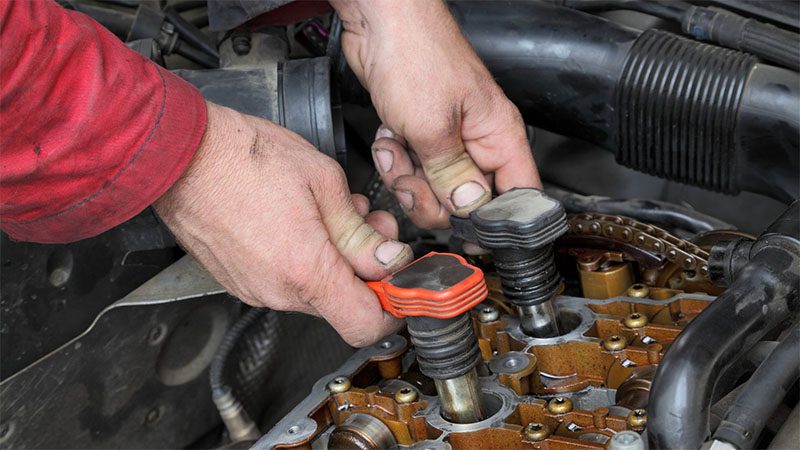
Coil packs are crucial elements in your car’s ignition system, responsible for producing the spark needed to ignite the air-fuel mixture in the engine’s cylinders.
These components have revolutionized ignition systems by eliminating the need for spark plug wires and distributors, thereby reducing potential failure points and enhancing overall engine reliability, all with one coil.
Ignition coils perform the vital task of converting the 12 volts from the car’s battery to the much higher voltage required to create a spark.
These coils often consist of windings made from copper wire, which is essential for transforming battery voltage into the high voltages necessary for igniting the air-fuel mixture in engines.
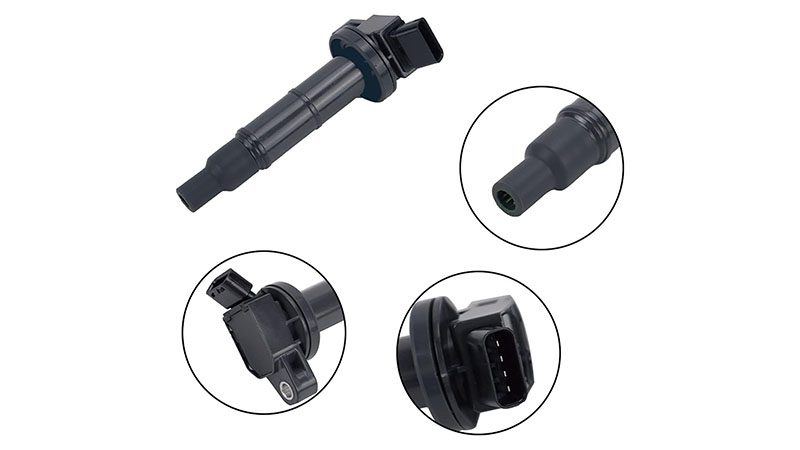
This transformation is essential for igniting the air-fuel mixture in the engine, which in turn powers the vehicle. The flow of electric current through the primary winding of the ignition coil generates a magnetic field around its core, which is crucial for inducing a high voltage in the secondary winding.
Without this high voltage, the spark plugs wouldn’t generate the necessary spark, leading to inefficient combustion and poor engine performance, especially if the catalytic converter is not functioning properly.
Traditional ignition systems typically utilized a single coil and a distributor to distribute the high voltage to each spark plug. An ignition coil consists of two coils wound around an iron core, allowing the system to convert battery voltage into the high voltages necessary for igniting the air-fuel mixture in engines.
However, modern vehicles often use coil-on-plug systems, where one or more cylinders have their own dedicated coil. This design not only improves ignition timing and engine performance but also simplifies the ignition system by removing the need for a distributor and spark plug wires.
These differences are key to diagnosing and addressing coil pack issues effectively.
Common Symptoms of a Failing Coil Pack
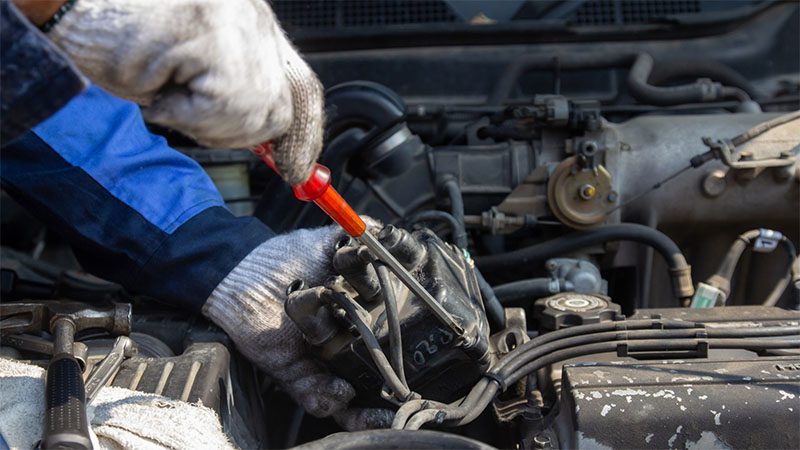
Recognizing the symptoms of a failing coil pack early can save you from extensive engine damage and costly repairs. One of the most common signs is engine misfires, which often manifest as rough idling. If you notice your engine running unevenly or if the vehicle shakes while idling, it could indicate a problem with the coil pack.
Poor fuel economy is another symptom. Failed coil packs can cause inefficient combustion, resulting in increased fuel consumption. Difficulty starting your vehicle can also be a red flag, signaling issues with the ignition coil. Unusual noises like backfiring or popping sounds from the exhaust system are additional indicators of coil pack problems.
Ignoring these symptoms can lead to further damage, including reduced engine power and unexpected stalling. If you encounter any of these symptoms, seeking professional help promptly can prevent extensive repairs and ensure your vehicle remains in good working condition. Early intervention is crucial to maintaining engine health and driving safety.
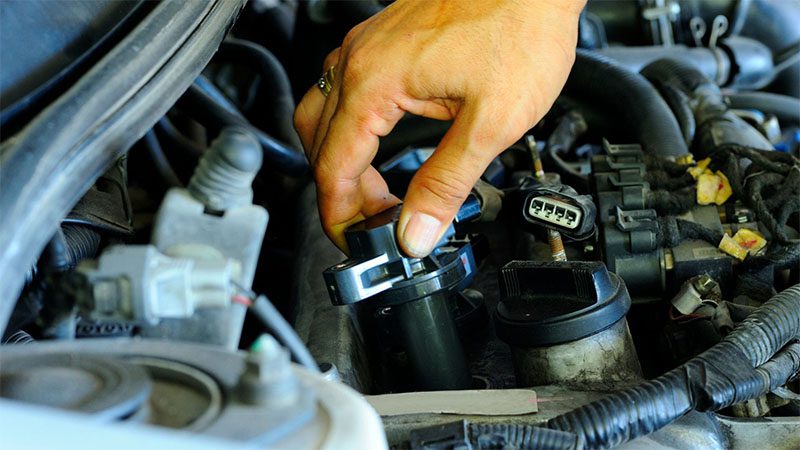
Visual Inspection of Coil Packs
Before: A visual inspection of your coil packs can reveal a lot about their condition. Look for signs of damage such as cracks, burn marks, and corrosion. These visible indicators can point to underlying issues that might lead to complete failure if not addressed. Melted plastic on the coil pack is another sign of degradation that needs immediate attention.
After: A visual inspection of your coil packs can reveal a lot about their condition. Look for signs of damage such as:
- cracks
- burn marks
- corrosion
- melted plastic
These visible indicators can point to underlying issues that might lead to complete failure if not addressed.
Identifying these issues early can help you prevent more severe engine problems and costly repairs. Regular visual inspections are a simple yet effective way to keep your ignition system in check and ensure your engine runs smoothly.
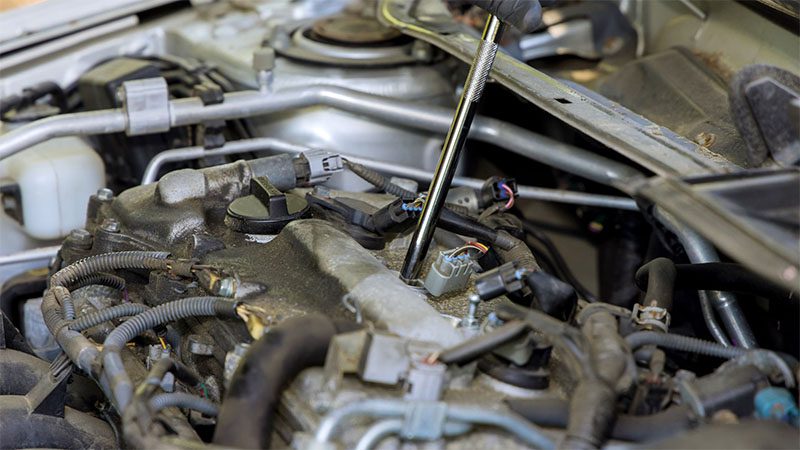
Measuring Resistance in Coil Packs
Measuring the resistance in your coil packs is another essential diagnostic step. A multimeter can be used to measure the resistance in the primary and secondary windings of the coil packs.
The primary winding resistance typically falls between 0.4 and 2 ohms, while the secondary winding should generally be between 6,000 and 10,000 ohms.
If the resistance readings are outside these specified ranges, it indicates that the coil pack is faulty and needs to be replaced. Regularly checking the resistance can help you catch problems early and maintain optimal engine performance.
Testing for Spark Plug Output
Testing spark output is crucial for diagnosing potential coil pack issues. A spark tester is the tool used for this purpose. Connect the spark tester to the coil pack and crank the engine to check for a strong spark.
A weak spark or non-existent spark indicates that the coil pack is defective and needs to be replaced. This simple test can save you from more complicated and costly diagnostics, helping you maintain your vehicle’s ignition system efficiently.
Diagnosing Coil Pack Issues
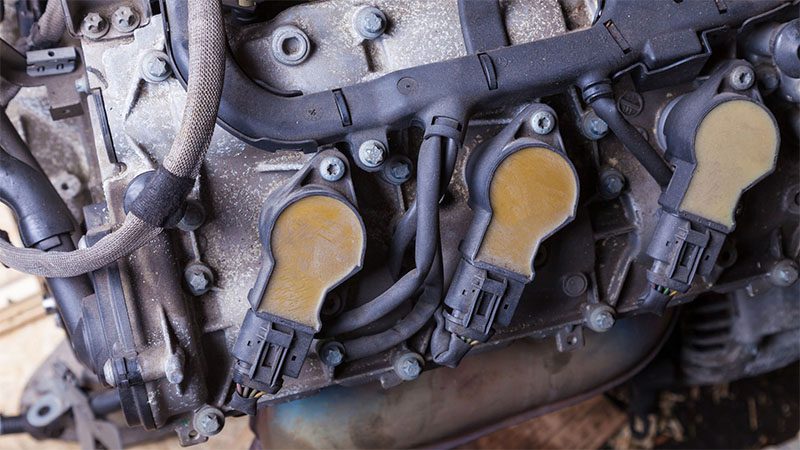
Diagnosing coil pack issues involves understanding their role in the ignition process. Coil packs convert the low voltage from the car’s battery into the high voltage needed to ignite the air-fuel mixture in the engine.
A failing coil pack can cause the check engine light to illuminate, indicating that there is a problem that needs immediate attention.
Symptoms such as backfiring, which occurs when unburned fuel ignites in the exhaust system, are clear indicators of a defective coil pack. Moisture ingress due to valve cover leaks can also damage ignition coils, leading to performance issues.
During a visual inspection, it’s important to check for damaged wiring or connectors, as these can contribute to coil failure.
If resistance readings or spark tests show an issue with the ignition coil, it indicates a problem. In such cases, replacement of the coil is necessary.
However, if symptoms persist despite normal ignition coil tests, other components like spark plugs, the ignition control module, or wiring should be checked. This comprehensive approach ensures that all potential issues are addressed, leading to a more reliable diagnosis.
Replacing a Faulty Coil Pack
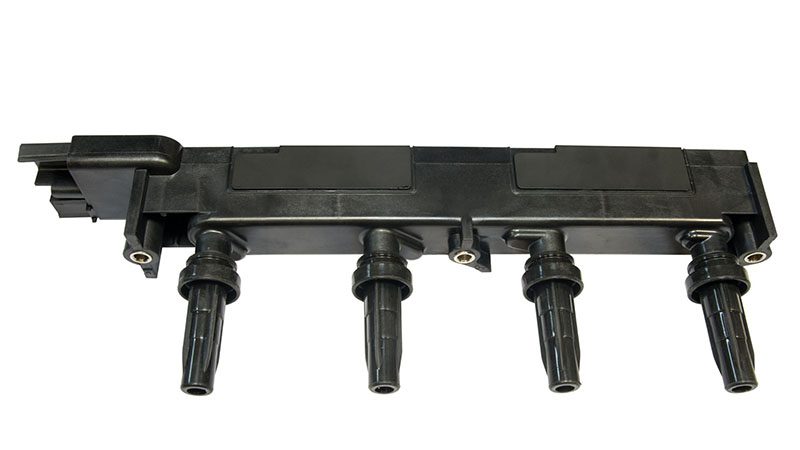
Replacing a faulty coil pack requires careful attention to detail. If multiple coils are being replaced, label each connector to ensure they are reconnected correctly after installation. This step is crucial to avoid any confusion and ensure that each coil functions properly.
Be cautious of the insulator boot that can stick to the spark plug and may tear during removal when removing the old ignition coil. This precaution helps to avoid any additional damage or complications during the replacement process.
Ensure the new coil pack is installed in the same position as the old one to avoid misfiring and ensure proper function. Replacing all ignition coils simultaneously can be beneficial, as failing coils may indicate that others are nearing the end of their lifespan. This proactive approach can save you from further issues down the line.
Preventative Maintenance Tips for Coil Packs

Preventative maintenance is key to prolonging the life of your coil packs. Coil-on-plug designs enhance engine performance by providing precise timing for spark delivery, improving combustion efficiency.
To ensure reliability, always choose high-quality replacement parts for ignition coils. This will help maintain optimal performance.
Age and exposure to heat are common factors that can lead to ignition coil failure. Applying dielectric grease to the tip of the new ignition coil helps create a moisture seal and facilitates future removal. Vibration and environmental exposure can also damage ignition coils over time, making regular checks important.
The expected lifespan of ignition coils is typically more than 100,000 miles, setting a benchmark for maintenance scheduling. Regular inspections and timely replacements based on this lifespan can help you avoid unexpected failures and keep your engine running smoothly.
Professional Help for Coil Pack Problems
Sometimes, despite your best efforts, engine issues persist. In such cases, seeking professional help is advisable. After installing a new ignition coil, it’s essential to reattach the negative cable of the car’s battery and test the engine to confirm the issue has been resolved.
The car’s battery plays a crucial role in providing the necessary low voltage for the ignition coils to function, transforming its 12 volts into thousands of volts required to generate a spark at the spark plug, which ignites the air-fuel mixture in gas-powered vehicles. Keeping spare ignition coils on hand can help address sudden failures without significant downtime.

If engine problems continue despite troubleshooting, a professional mechanic can provide a thorough diagnosis and repair. Their expertise can ensure that all potential issues are addressed, and your vehicle is back to optimal performance.
Summary
In summary, understanding coil packs and recognizing the symptoms of their failure is crucial for maintaining your vehicle’s performance. Regular visual inspections, resistance measurements, and spark output tests can help diagnose issues early.
When replacing faulty coil packs, it’s important to follow proper procedures to avoid further complications.
Preventative maintenance and high-quality replacement parts are key to the longevity of your ignition system. If issues persist, seeking professional help can ensure that your vehicle remains in top condition.
Regular maintenance and prompt attention to symptoms will keep your engine running smoothly, ensuring a safe and efficient driving experience.
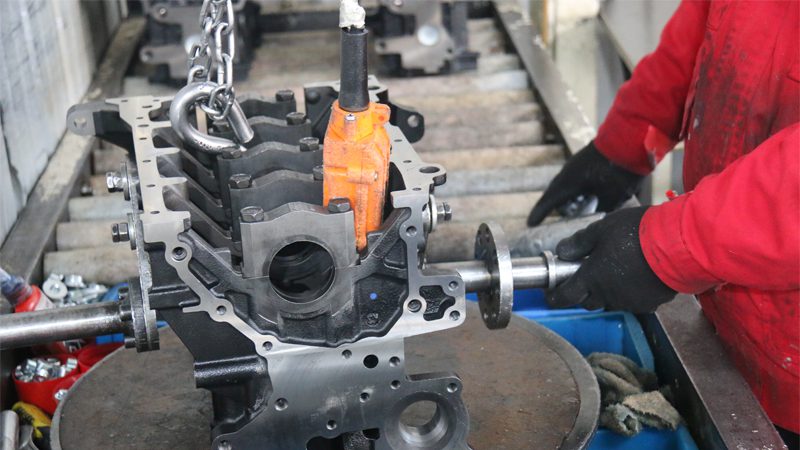
At Nanjing Woda Auto Technology Co., Ltd., we specialize in high-quality OEM and aftermarket automotive engine parts, including ignition components, cylinder heads, turbochargers, and more.
With a reputation for reliability and professional support, we supply businesses worldwide with top-tier parts to keep vehicles performing at their best. Contact us now for detailed information and expert solutions customized to your needs.
Frequently Asked Questions
What are the common symptoms of a failing coil pack?
Common symptoms of a failing coil pack include engine misfires, rough idling, poor fuel economy, difficulty starting, and unusual noises such as backfiring. Addressing these signs promptly can help prevent further engine damage.
How can I visually inspect my coil packs for damage?
You can visually inspect your coil packs for damage by checking for visible signs like cracks, burn marks, corrosion, and melted plastic. Identifying these issues is crucial for ensuring optimal engine performance.
How do I measure the resistance in my coil packs?
To measure the resistance in your coil packs, use a multimeter to check the primary winding, which should read between 0.4 and 2 ohms, and the secondary winding, which should be between 6,000 and 10,000 ohms. This will help you determine if your coil packs are functioning properly.
What should I do if my car shows symptoms of a faulty coil pack despite normal resistance readings and the check engine light is on?
If your car shows symptoms of a faulty coil pack despite normal resistance readings, you should inspect related components such as spark plugs and wiring. If issues continue, seek a professional mechanic for a comprehensive diagnosis.
Are there any preventative maintenance tips for coil packs?
To ensure the longevity of your coil packs, regularly inspect them, use high-quality replacement parts, protect them from heat and vibration, and apply dielectric grease for moisture sealing. Additionally, replace ignition coils as needed, ideally after 100,000 miles.





